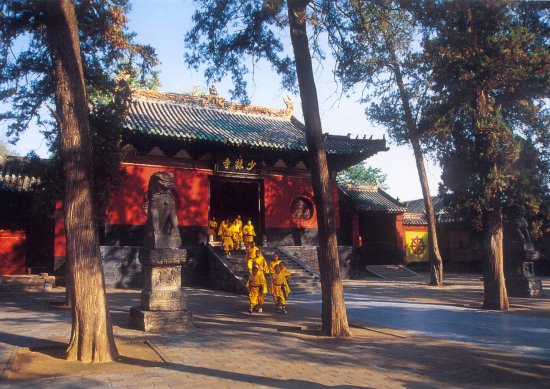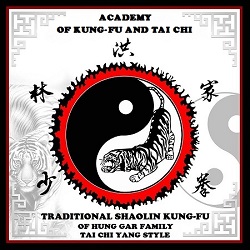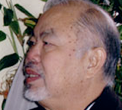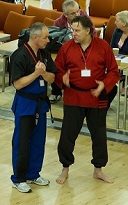Kung Fu Sui Lam Hung-Gar Khin
The Origins of Hung Gar
Hung Gar's earliest beginnings have been traced to the 17th century in Southern China. More specifically, legend has it that a Shaolin monk by the name of Gee Seen Sim See was at the heart of Hung Gar's emergence. See was alive during a time of fighting in the Qing Dynasty. He practiced the arts during an era when the Shaolin Temple had become a refuge for those that opposed the ruling class (the Manchus), allowing him to practice in semi-secrecy. When the northern temple was burned down, many fled to the southern Shaolin temple in the Fukien Province of Southern China along with him. There, it is believed See trained several people, including non-Buddhist monks, also called Shaolin Layman Disciples, in the art of Shaolin Gung Fu.
Gee Seen Sim See was hardly the only person of significance that fled to the temple and opposed the Manchus. Hung Hei Gun also took refuge there, where he trained under See. Eventually, Hung Hei Gun became See's top student. Hung Gar was named after Hung Hei Gun, causing most to consider him the founder of the system.
That said, legend has it that Gee Seen Sim See also taught four others, who became the founding fathers of the five southern Shaolin styles: Hung Gar, Choy Gar, Mok Gar, Li Gar and Lau Gar.

Historical Significance
The character "hung" (洪) was used in the reign name of the emperor that overthrew the Mongol Yuan Dynasty to establish the Han Chinese Ming Dynasty. Therefore, the character was highly esteemed by those who opposed the Manchu Qing Dynasty. Hung Hei-Gun is an assumed name, intended to honor the first Ming Emperor. Along with this, rebels named their secret societies "Hung Mun." The martial arts these people practiced came to be known as "Hung Gar" and "Hung Kuen."
Hung Gar Chuan (fist of the family Hung) or Hung Jia Chuan in mandarin is a representative style of the South China's boxing. He developed essentially in the region of Canton (Guandong)
If it is true that Hung Gar is one of the most representative of the boxing said about the external system (Wai Jia), she puts neverless the accent on the work of the energy through sounds and besides develops the fight at short said moved closer distance what makes of Hung Ga one of the most formidable boxes in real fight.

Family Hung Kuen Lineage
Gee Sin Sim See
Abbot of Shaolin Temple
Hung Hey Goon
Wong Key Yin
Wong Fei Hung
Lam Sai Wing
The Practice of Hung Gar
This southern Chinese kung fu style incorporates both external and internal methods. Hung Gar emphasizes strong stances, long and short hand techniques, which encompasses straight, circular, and angular movements. The intent is to develop efficiency of movement, as well as coordination. This result in superior inside maneuvers, none more evident than the variation of kicks, mostly executed below the waist. Although the execution of movement appears to be hard, this system, in fact, incorporates both hard and soft techniques in a multitude of directions. The execution of advanced techniques is complex. Research has determined that Hung Gar possesses more intricate hand techniques and stance maneuvers than any other traditional system from China. Because it is also an internal system, it boasts many health benefits.
Strong low stances and powerful punches are a staple of Hung Gar. In addition, correct breathing (strong and clear, but not necessarily fast) is important in the system as well. That said, each sub style of Hung Gar has its own specific differences.
Forms, self-defense, and weapons are taught within the majority of Hung Gar systems. Both hard and soft techniques are practiced; although many look at Hung Gar as a hard style. Generally, like other kung fu styles, it encompasses the five animals, five elements, and 12 bridges.
Kung Fu Sui Lam Hung-Gar Khin, 8 Ferry Road, Scunthorpe, DN15 6SE, United Kingdom.
07460 867 168 | info@hunggar-scunthorpe.com | Join us on Facebook


